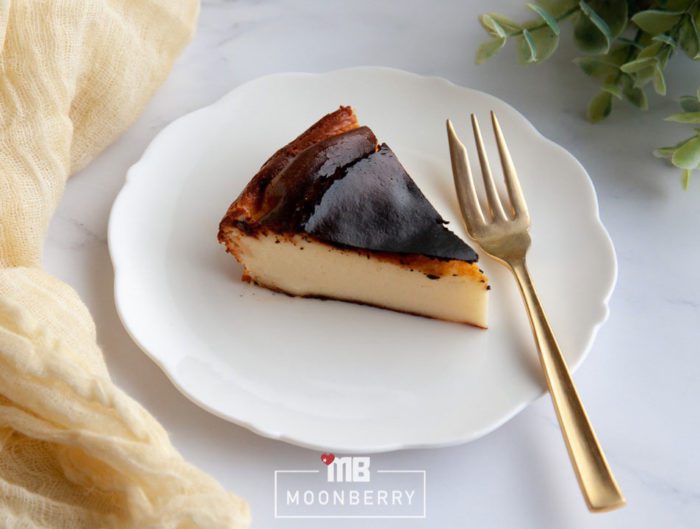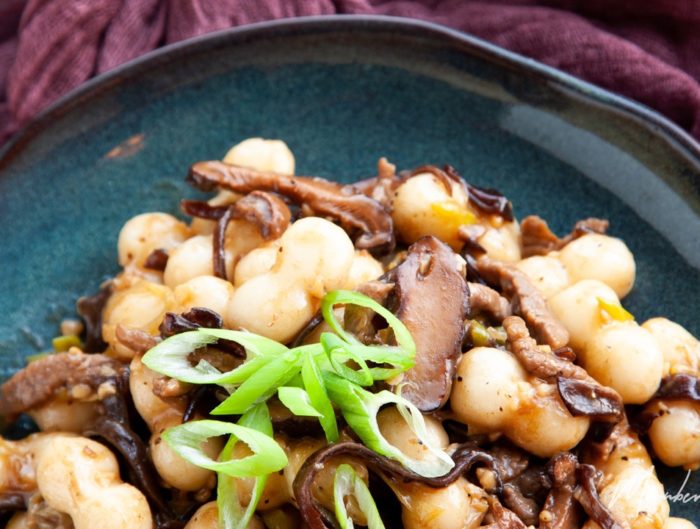Abacus Seeds/Beads 算盘子 Suan Pan Zi is a humble Hakka dish that consists of stir-fried taro gnocchis, ground pork, and mushrooms. I had it for the first time last year when I was a culinary judge for a Mrs. Singapore Universe pageant and one of the contestants made it. I was very impressed with the dish but when I was curious about where I could have it again, my chef buddy told me Abacus Seeds is a homemade dish that’s almost impossible to find in restaurants because this dish is very, very under the radar. Other friends whom I’ve asked also told me that they’ve had Abacus Seeds only during Chinese New Year and even so, it would be at reunion dinners at home.
There’s no way around it. If I was to have Abacus Seeds again, I have to make it from scratch. Making the taro gnocchis require quite a bit of elbow grease and the entire process to create this dish can be quite laborious. Nonetheless I decided to attempt making Abacus Seeds from scratch for this year’s Chinese New Year.
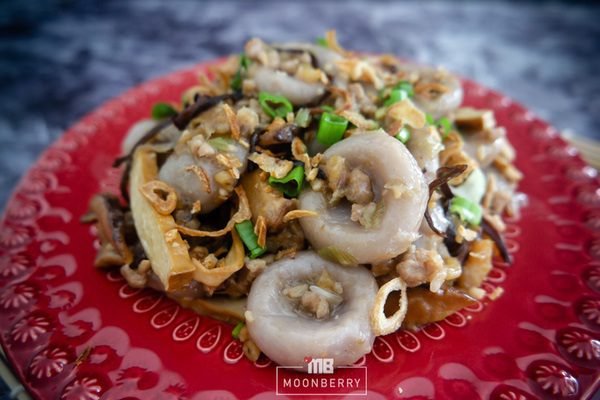
Let me preface that my family and I don’t observe traditional Chinese New Year celebrations (I have mentioned this before), and I’m still learning about the various ways this significant Asian holiday is celebrated around the world. Even though Abacus Seeds is a traditional Hakka dish, in Singapore it’s a popular homemade dish served during Chinese New Year reunion dinners because the shape of taro gnocchis is similar to abacus beads aka ancient Chinese calculator, so the symbolism here is obviously Money! Wealth! Affluence! and that association is always welcome. :)
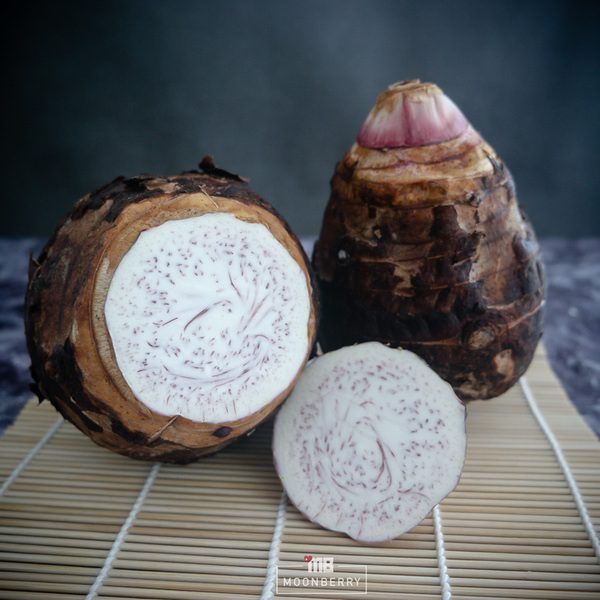
Let’s make sure we are using the correct root vegetable. This is taro, but some people also refer to it as yam.
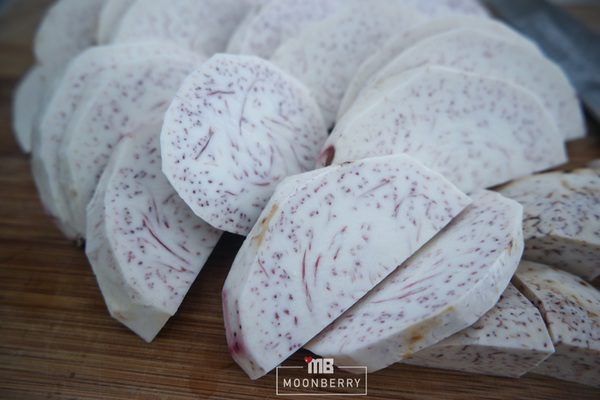
Slice up the taro.
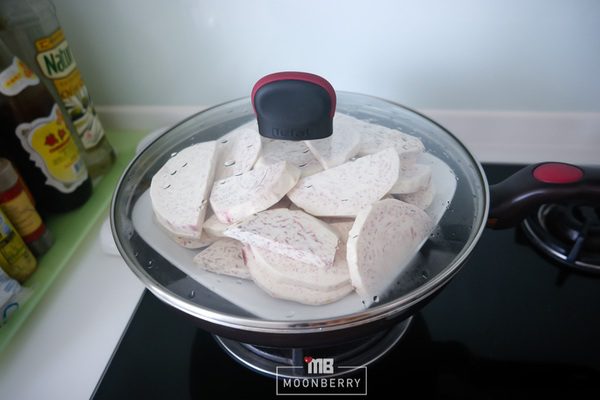
Steam until soft, about 20 mins to half hour.
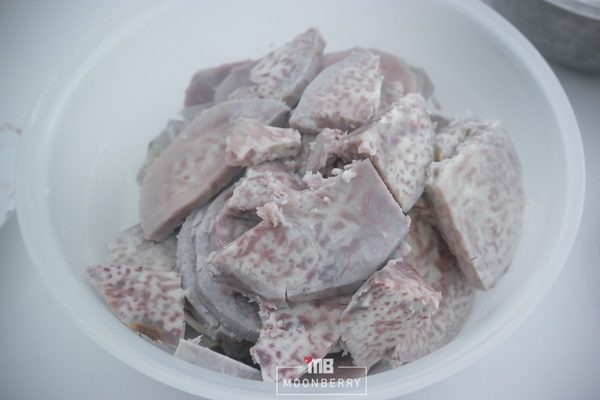
After steaming, the taro is soft enough to mash with a fork.
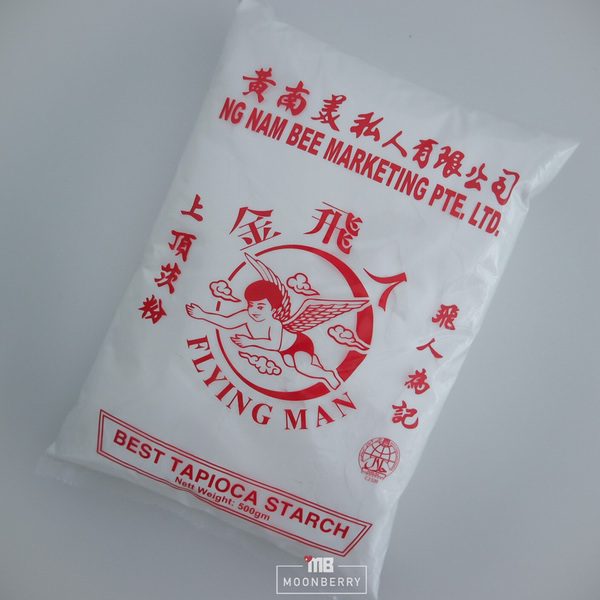
For this dish, we’re using Tapioca Flour. Not corn starch, not sweet potato flour, not glutinous rice powder. I went to three different supermarkets looking for this without success, and in the end I found this pack at the wet market.
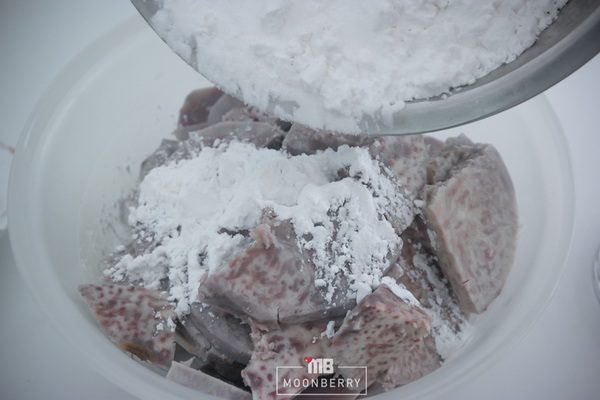
Add tapioca flour to steamed taro.
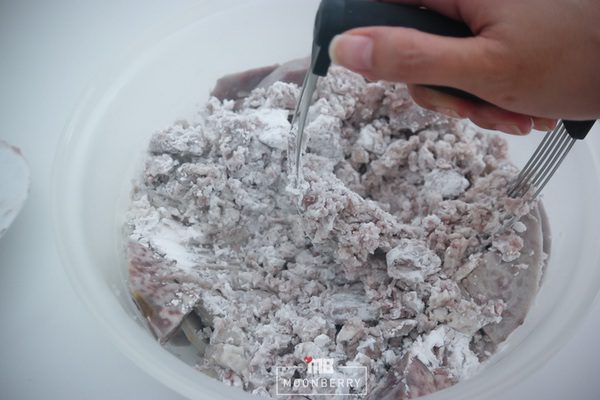
Mash, mash, mash.
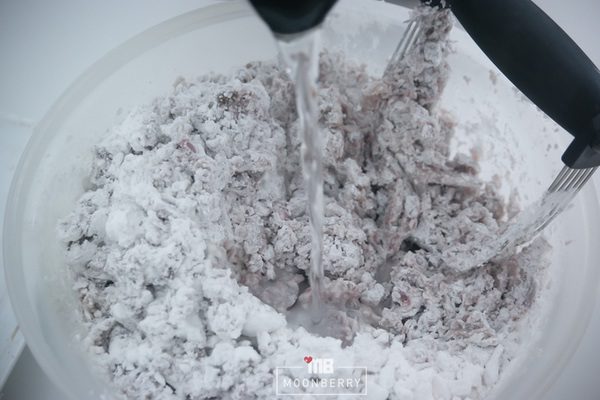
Add boiling water a little at a time and continue mashing / mixing until a dough forms.
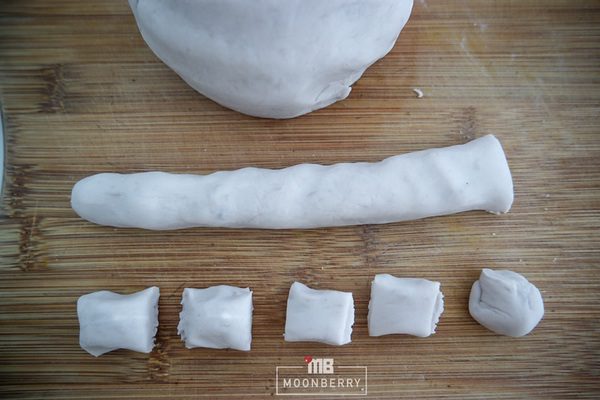
Divvy up the dough into portions, roll portions into logs, then cut up about 1 inch pieces. Roll the piece into a ball then make an indentation in the center using finger.
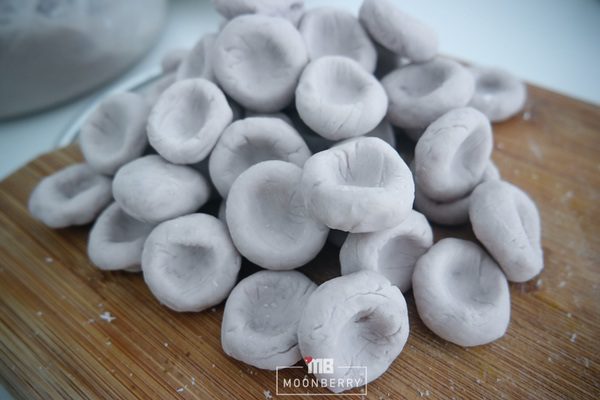
This is the laborious stage, but seeing the pile of abacus seeds growing in size is rewarding.
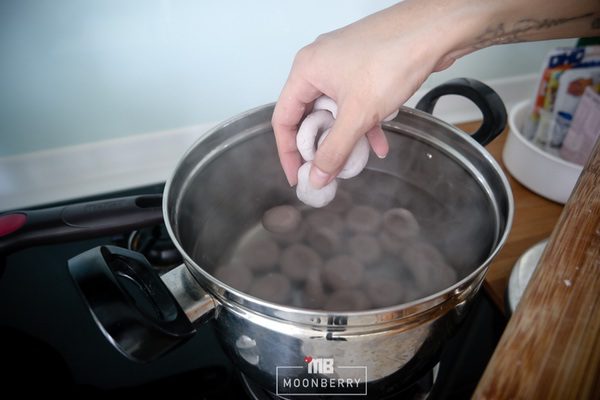
Boil the abacus seeds in water until they float to the top.
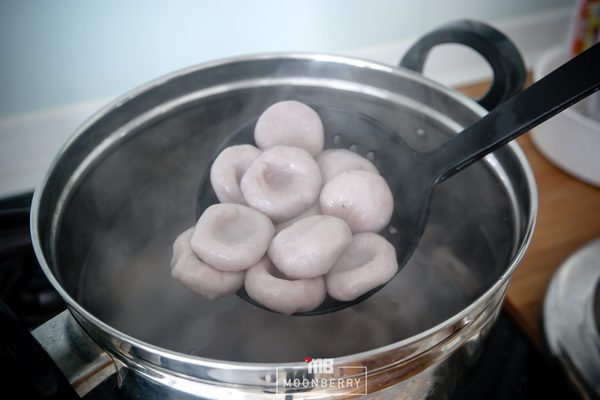
When the abacus seeds float to the top, remove from boiling water.
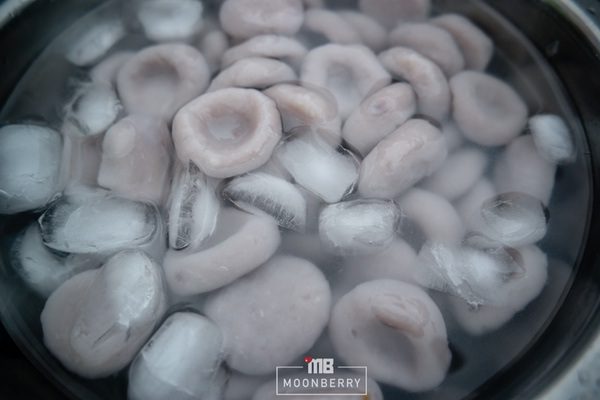
Plunge into cold water immediately to prevent sticking.
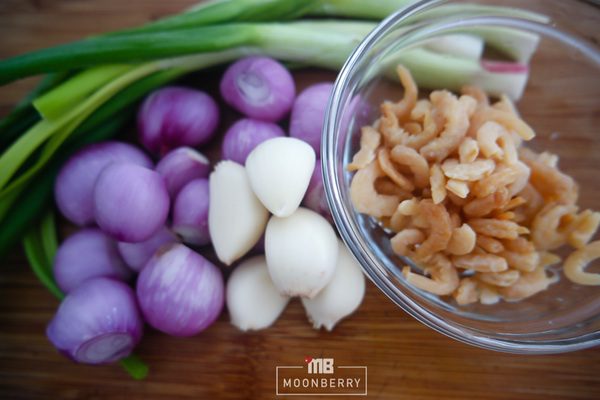
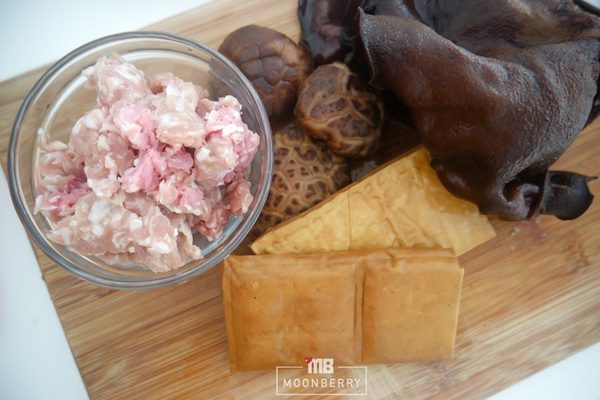
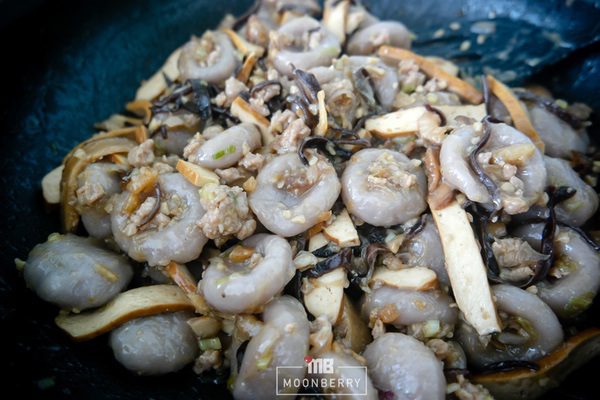
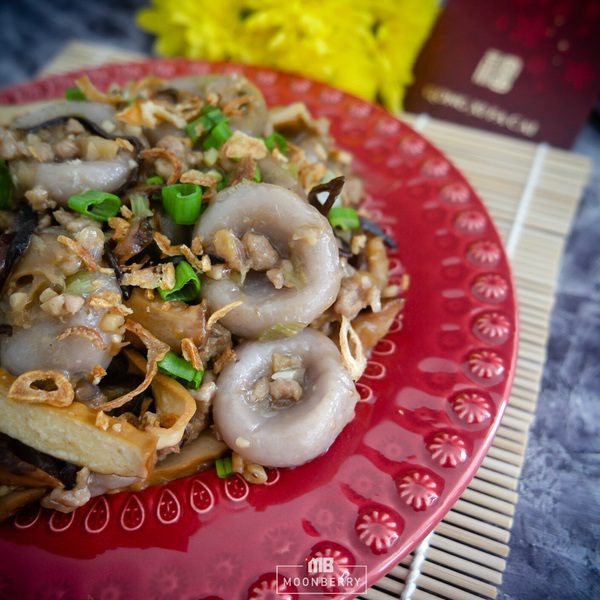
Abacus Seeds (Hakka Suan Pan Zi)
500g taro (peeled)
300g tapioca flour
150 ml boiling water
3 Tbs oil
1 Tbs minced garlic
1 Tbs minced shallots
50g dried shrimp (soaked in water until soft, then drain the water)
300g minced pork
4 shiitake mushroom (soaked in water and cut into strips)
2 woodear fungus (soaked in water and cut into strips)
1 fried beancurd (cut into slices)
1 Tbs cooking rice wine
1 Tbs soya sauce
2 Tbs oyster sauce
1 Tbs fish sauce
½ tsp white pepper
¼ cup chopped scallion
¼ cup crispy fried shallots
1. Slice taro and steam until soft. Remove from heat and mash steamed taro with a fork.
2. Add tapioca flour and boiled water to mashed taro, a little at a time, and continue mashing until incorporated.
3. Mix until dough is formed and knead dough until smooth, and divide into 4 portions.
4. Divide dough into portions, roll into cylinders and cut into 1 inch pieces.
5. Roll the cut pieces into a ball and make a dent in the centre using finger. Repeat for the rest of the dough.
6. Boil abacus seeds in water until they float to the top.
7. Transfer abacus seeds to cold water and allow to cool. Drain and set aside.
8. Heat oil to wok. Stir fry minced garlic, minced shallots, dried shrimp until fragrant.
9. Add minced pork, and cooking rice wine.
10. Add mushrooms and beancurd. Season with soy sauce, oyster sauce, fish sauce, white pepper.
11. Add abacus seeds and stir fry until fragrant. Serve with chopped scallion and crispy fried shallots.
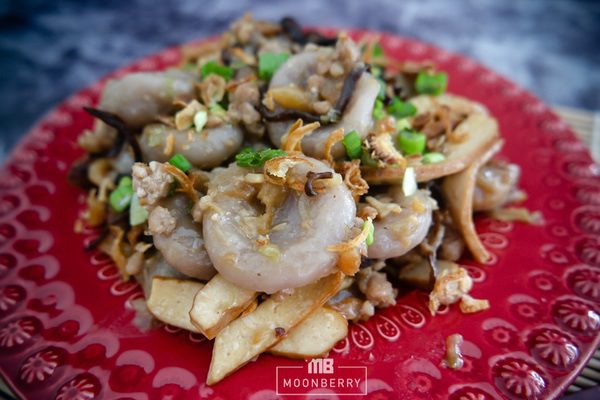
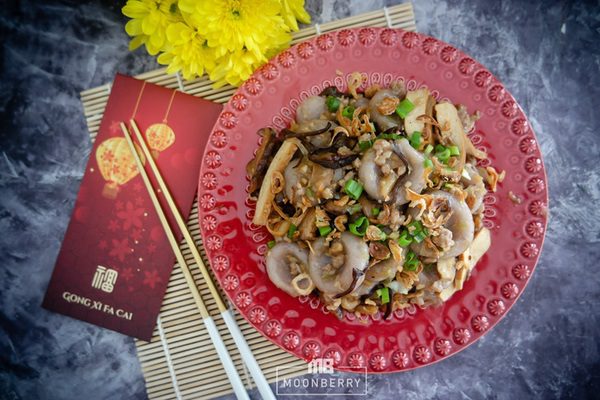
The finished dish turns out to be quite satisfying for me. But it could be better: the texture isn’t as bouncy as I had intended and to remedy this next time, I may have to add more tapioca flour. The flavour of my abacus seeds is on-point though and I can taste the taro distinctly. I realize there is a very delicate balance between texture and flavour, so the ratio of steamed taro and tapioca flour is critical and should be adjusted accordingly by eye when making the dough. Too much taro, too little tapioca flour = soft soggy abacus seeds. Too little taro, too much tapioca flour = tough flavorless abacus seeds. The ideal result is achieving a bouncy chewy texture AND fragrant taro flavor. By the way, I also find that adding chopped cilantro to the finished Abacus Seeds dish makes it more delicious for me.
Have you eaten or made Abacus Seeds before?


